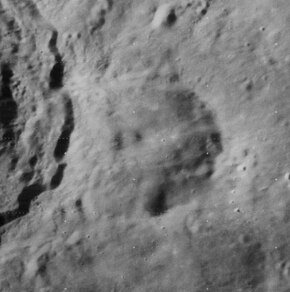Maria Mitchell: The First Female Astronomer
Young Maria Mitchell grew up with awe-inspiring astronomical tales from her father; little did she know she would change the face of astronomy down the line.
Photo: Hulton Archive/Getty Images
Written by Lahari Thota
Young Maria Mitchell would often listen to her father with wide eyes as he regaled her with knowledge of her favorite subject; astronomy. Little did the aspiring scientist know she would grow to become a powerful American woman who changed the field of astronomy and science with her awe inspiring discoveries and distinguished accomplishments.
Mitchell lived an ordinary childhood. She was born on August 1,1818 to parents William and Lydia. Mitchell was the third eldest out of ten other siblings. As Quakers, her parents were strong advocates for her education and ensured she received the same teachings as boys her age. Her father was an astronomer and teacher himself and often regaled his daughter with his teachings of mathematics, navigation, and most especially, the stars and space. Mitchell was a student at Cyrus Peirce’s School For Young Ladies and she studied there until completing school at 16. Only shortly after this, Mitchell would go on to establish a school training girls in fields of math and science.
Miss Mitchell’s Comet
In 1836, Mitchell began to work as a Librarian of the Nantucket Atheneum where she would stay for two decades. During this time, the gifted young woman loved spending her days reading and at night, gazing upon the wonders of the dark sky with her father on his cozy observatory built atop the Pacific Bank. However, one of these nights would prove to be nothing short of extraordinary. On October 1, 1847, Mitchell would make history by discovering a small blurry spot that didn’t appear on her charts. At age 29, she had become the first female astronomer to discover a comet which would be called “Miss Mitchell’s Comet”. This momentous discovery would later earn her a gold medal awarded by King Frederick VI of Denmark. In 1848, she would also become the first woman to be elected to the American Academy of Arts and Sciences as a result of her renowned revelation.
Mitchell would also be elected into the American Association for the Advancement of Science and the American Philosophical Society. The talented astronomer was likely one of the first professional women to be employed by the US government and was hired to make calculations for a top project managed by the US Coastal Survey.
Vassar College Today
In 1856, Mitchell would leave the Atheneum to travel across Europe, meeting with astronomers along her journey. During this time period, Mitchel would become tangled in anti slavery and suffrage movements. In 1865, she was offered by Vassar college founder Matthew Vassar to join as a Professor of Astronomy. Mitchell felt truly at home at the famed college and enjoyed having access to a twelve inch telescope, the third largest in the country, and took interest in the surfaces of gas giants Jupiter and Saturn. She was beloved by her students and often defied social constructs and conventions by encouraging her female students to do classwork and observations regarding celestial bodies at night . Mitchel also invited feminists to speak out about political issues at her observatory, including the infamous Julia Ward Howe. Mitchell and her students would frequently have their detailed research be published in academic journals that would usually only publish the work of men. In 1906, three of her female pupils would be featured in the very first list of Academic Men of Science.
Mitchell was also a leader in several associations, she founded the American Association for the Advancement of Women and served as its president in 1873 and the vice president of one of the few mixed gender professional associations in its time, pioneer American Social Science Association. Mitchell also delivered an imperative speech in 1976 during the nation’s centennial year. It was entitled “The Need for Women In Science.”
Lunar Orbiter 4 image of Mitchell, with rim of Aristoteles at left
Mitchell retired from Vassar in 1888 due to her failing health but continued research in Lyn, Massachusetts where some of her sisters lived. She would die the next year in 1889 and was buried next to her parents in Nantucket's Prospect Hill Cemetery. Even after death, Mitchell would receive many accomplishments such as the Maria Mitchell Association being funded in 1902 by her friends and supporters. She was also elected to the Hall of Fame of Great Americans in 1905 and one of only three women to do so. Mitchell was inducted into the National Women’s Hall of Fame as well and later, would even have a lunar crater on the moon be named after her. Truly, Maria Mitchell will be remembered for centuries for her spectacular accomplishments in the field of astronomy as well as her significant efforts to find more ways for females to gain greater freedom regarding their education and research.
Sources
About Maria Mitchell. (n.d.). Maria Mitchell Association | Nantucket’s Science Center. https://www.mariamitchell.org/about-maria-mitchell
Biography: Maria Mitchell. (n.d.). Biography: Maria Mitchell. https://www.womenshistory.org/education-resources/biographies/maria-mitchell



